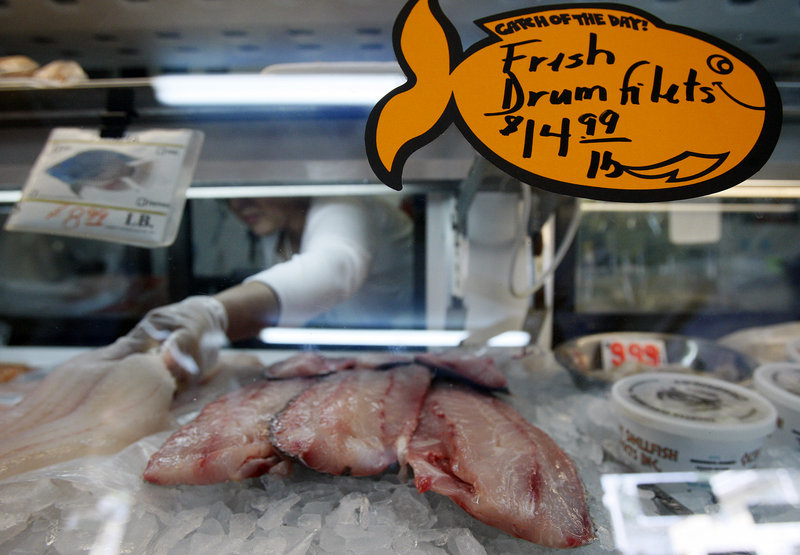NEW ORLEANS – The rich fishing grounds of the Gulf of Mexico are beginning to reopen more than three months after crude began gushing from the sea floor. But those who harvest, process and sell the catch face a new crisis – convincing wary consumers it’s not only delicious, but also safe.
As BP PLC closed the books on a defining week in its battle to contain the oil, with engineers finally forcing the surging crude underground with a torrent of mud and cement, people along the Gulf Coast began looking to the future – including the fishing industry, which has a tough sell despite tests showing the catch seems safe to eat.
“We have a huge perception problem,” said Ewell Smith, director of the Louisiana Seafood Promotion and Marketing Board. “We have lost markets across the country, and some of them may be lost for good.”
The Gulf accounts for a majority of the domestic shrimp and oysters eaten by Americans and about 2 percent of overall U.S. seafood consumption. But with safety suspicions abounding, consumers are turning up their noses and some wary suppliers appear to be turning to imports.
Tammy McNaught arrived in New Orleans from San Francisco on Saturday for a long weekend, and after seeing months of news coverage about the oil spill was trying to decide whether she would eat seafood and how much.
“It’s probably nothing, but I’m not sure if it is safe. However, if it’s deep fried, you know it is going to be OK,” McNaught said, laughing.
At the annual Great American Seafood Cookoff, held Saturday in New Orleans, competition was secondary this year to spreading good word about Gulf seafood.
“Right now the general perception is that Gulf seafood is tainted. And I’m sure some of it is,” said Peter Fischbach, of Toms River, N.J., a chef with Gourmet Dining Services. “But the stuff that’s tainted is not on the market. It’s not safe; it’s not edible. It’s not going to make its way to the market.”
BP this week finished pumping mud and cement into the well that blew out after the Deepwater Horizon rig exploded April 20, killing 11 workers. Spokesman Max McGahan said Saturday that engineers were still waiting for the cement to harden so work could begin on drilling the final 100 feet of a relief well.
When that relief well intersects the broken well, workers will pump more cement and mud in a “bottom kill” to seal the well permanently.
The well’s apparent suffocation coincided with the release of a federal report this week showing that only about a quarter of the oil lost to the leak remains in or along the shores of the Gulf, with the rest having dissipated or otherwise disappeared. The remaining 53 million gallons, though, would be enough alone to rank among the nation’s worst spills.
Some fishing grounds remain closed as that oil continues to wash through the Gulf, but state and federal tests have shown samples of seafood in some areas safe to eat. The Food and Drug Administration says chemical dispersants used to break up the oil do not pose a public health concern.
Doug Suttles, BP’s chief operating officer, sought to ease consumers’ minds and palates by saying this week he would eat Gulf seafood himself and “serve it to my family.”
Such assurances appear to be doing little to quell distaste for Gulf seafood, though.
Some processors are having difficulty selling the seafood they can get, even to long-established customers.
“I’ve talked to suppliers who have sold 20 years to companies and are now being told no,” Smith said. “A lot of people are substituting imported product for Gulf product.”
Keath Ladner, owner of Gulf Shores Sea Products in Bay St. Louis, Miss., won’t send his 70 boats out, even though shrimp season is open in some Mississippi waters.
“They’d lose money,” Ladner said. “Nobody wants it. I can’t sell it.”
Ladner’s main national buyer sent him a letter recently telling him it wouldn’t be buying seafood from the Gulf “until further notice,” he said.
Even at one of New Orleans’ toniest restaurants, Commander’s Palace, where the menu stars dishes including pecan-crusted Gulf fish topped with jumbo lump crab, barbecued wild white shrimp or crispy soft- shell crab, some customers are hesitant to order.
“We have been selling Gulf seafood the entire time and there’s some resistance, some people are worried,” said Ti Martin, who helps run the family business, says some customers have been hesitant to order them. “But really, the number of government agencies testing seafood is unprecedented. If it’s getting to market, it’s good.”
Send questions/comments to the editors.



Success. Please wait for the page to reload. If the page does not reload within 5 seconds, please refresh the page.
Enter your email and password to access comments.
Hi, to comment on stories you must . This profile is in addition to your subscription and website login.
Already have a commenting profile? .
Invalid username/password.
Please check your email to confirm and complete your registration.
Only subscribers are eligible to post comments. Please subscribe or login first for digital access. Here’s why.
Use the form below to reset your password. When you've submitted your account email, we will send an email with a reset code.